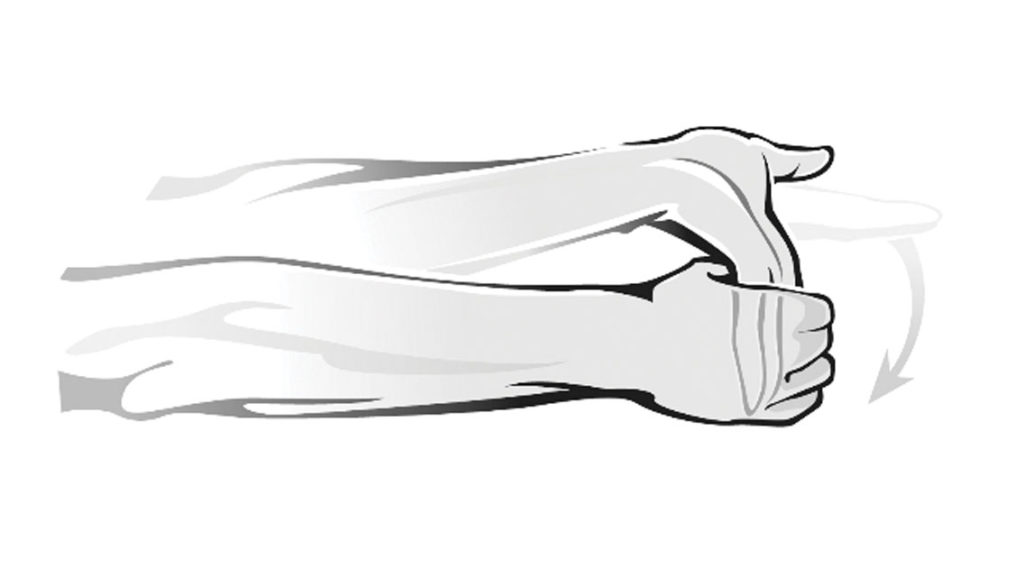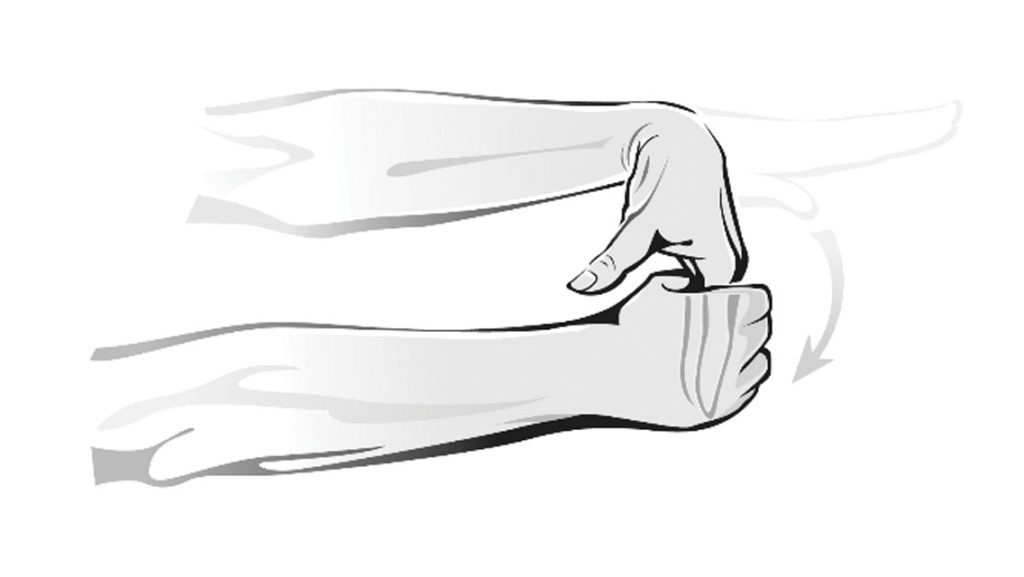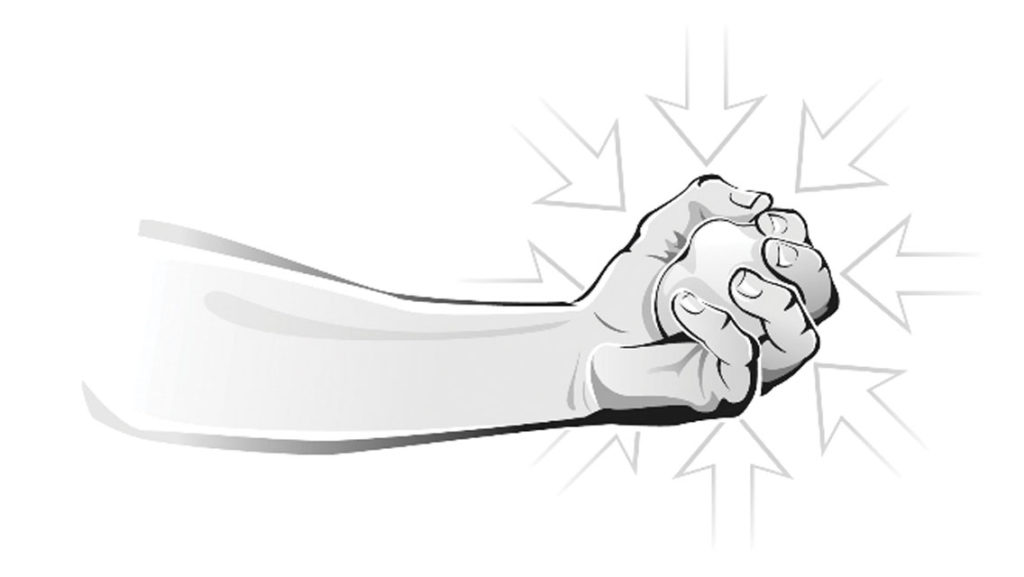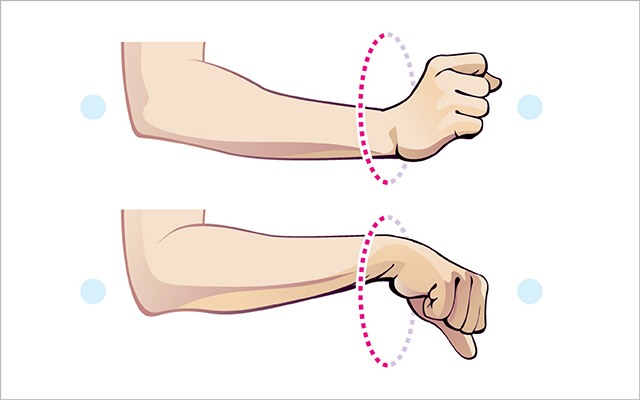I was once paid $75 at a mall to complete a 90-minute written survey. I learned that day that there’s no such thing as easy money. The morning after filling in hundreds of bubbles (“Agree,” “Disagree,” “No Opinion”) with a narrow pencil, I awoke with pain in my right wrist so severe that I had to scribble my name with my left hand at the hospital reception window. A nurse practitioner fitted me with a wrist splint and gave me a sheet of hand exercises.
Computer work, as I discovered, is not the only cause of carpal tunnel syndrome and other repetitive-strain injuries (RSIs) to the wrists, hands and arms. RSI risk increases with a wide range of activities — mostly tasks that involve extended periods of forceful gripping or repetitive use of the hands with the wrists bent. Besides handwriting, these activities include more-modern forms of communication such as typing and text messaging. But many sports and recreational activities can also lead to RSIs, including tennis, racquetball, golf, weightlifting, cycling, rowing, bowling and fishing. More than 21 million Americans suffer from these injuries.
“Repetitive-strain injuries in sports usually occur due to overuse, poor conditioning, poor technique or some combination of those factors,” says Timothy S. Johnson, MD, an orthopedic surgeon at the National Sports Medicine Institute and assistant professor at Johns Hopkins School of Medicine in Baltimore. “Typically you’re engaging in an activity for a longer-than-usual period of time, like playing golf all day when you haven’t played in months.”
Whatever your activity, the longer you do it without taking a break, the more you strain the muscles, ligaments, tendons or nerves that extend from your elbows to your fingers, which can lead to inflammation and pain.
In the case of carpal tunnel syndrome, the best-known RSI, the median nerve in the wrist swells with overuse, causing it to become inflamed as it presses against adjacent tendons that must also squeeze through the narrow “tunnel” of the wrist.
In the case of two of the other most common RSIs, lateral epicondylitis (tennis elbow) and medial epicondylitis (golf elbow), inflammation and pain occur where tendon attaches to bone at the elbow.
You can often avoid RSIs by making simple form changes, says Johnson. A golf or tennis instructor, for example, can show you how to swing a club or racquet using primarily the large shoulder and torso muscles, rather than the smaller, weaker muscles of the arms and wrists.
There are, in fact, many ways to prevent, manage and treat RSIs so that you can get back to work — or back in the game.
RSI Pain-Management Strategies
Here are the most effective ways to prevent and alleviate RSI pain:
- Take a “microbreak” by stopping to rest and stretch active muscles for a minute or so every 20 minutes while writing, keyboarding, gripping sports equipment, playing a musical instrument or using tools.
- Change your tools. Use fat pens while writing, switch to an ergonomic keyboard, and place wrist rest pads in front of your keyboard and mouse pad.
- Change your technique. Keep wrists as straight as possible during activities and reduce the force applied by hands and fingers. Tap the keyboard softly and relax your grip on sports equipment whenever possible (such as between points while playing tennis or between strokes while rowing).
- Follow the R.I.C.E. formula (rest, ice, compression, elevation) and avoid activities that trigger or worsen symptoms.
- Avoid processed sugars and flours, which worsen inflammation. Instead, emphasize brightly colored vegetables, omega-3 fats and anti-inflammatory herbs like turmeric.
- Try taking vitamin B6, which offers pain relief to some people.
These strategies usually diminish or eliminate all symptoms within one to two weeks. If they persist, and the symptoms interfere with normal activities or sleep, visit an orthopedist, neurologist or rheumatologist, because leaving symptoms untreated can lead to worsening pain, or even nerve or muscle damage. The doctor will usually do the following:
- Fit you for a splint that keeps the wrist in a neutral position during certain activities and while you sleep (sleeping on bent hands is a common problem that worsens RSI pain).
- Advise you to use nonprescription anti-inflammatories for temporary relief.
- Refer you to A physical therapist, whose modalities may include ice, heat, ultrasound, stretches and strengthening exercises.
Massage that emphasizes the wrists, forearms, and hands also can help relieve the pressure and pain that lead to inflammation.
Yoga can help, too. A classic 1998 study published in The Journal of the American Medical Association found that twice-weekly yoga sessions for eight weeks reduced pain and improved grip strength in carpal tunnel sufferers — probably because yoga improves joint strength, flexibility and blood flow.
The National Institutes of Health suggests that acupuncture may be an acceptable alternative in easing carpal tunnel symptoms. And anecdotal evidence indicates that chiropractic care also helps many patients with pain management.
“Almost all of my patients come to me only after conventional medicine hasn’t worked,” says integrative physician Martha Grout, MD, owner of the Arizona Center for Advanced Medicine in Scottsdale, and Arizona chapter president of the American Academy of Medical Acupuncture.
Getting Serious
In serious RSI cases lasting three to 12 months that have gone untreated or that aren’t helped by the above strategies, a doctor may recommend cortisone injections or outpatient endoscopic surgery.
Fortunately, the splint and exercises were all that I needed. My wrist was fine within a few weeks. I still wear the splint when I fill out forms, and I do WristWand (www.wristwand.com) exercises when I feel any aches or pains. And, just to be safe, I steer clear of survey stations at the mall.
Symptom Checklist
Symptoms of repetitive-strain injuries may include any or all of the following:
- Aching
- Pain, often radiating up the arm
- Tingling
- Numbness
- In serious cases, weakened hand grip
Stretching Exercises for a Repetitive Strain Injury
Here are three exercises recommended for repetitive-strain injuries by Dino Pinciotti, PT, director of the Sports Physical Therapy Institute in Princeton, N.J.:
1. Wrist Flexor Stretch

Extend left arm straight in front of you with palm up. Use right hand to bend left wrist downward, fingers toward floor. Hold 30 seconds. Repeat with other arm. Do one set of three or four repetitions every one to two hours.
2. Wrist Extensor Stretch

Extend left arm straight in front of you with palm down. Use right hand to bend left wrist downward, fingers toward floor. Hold 30 seconds. Repeat with other arm. Do one set of three or four repetitions every one to two hours.
3. Squeeze Play

Once or twice a day, squeeze a sponge or ball (must be softer than a tennis ball) to make a tight fist 30 to 50 times.
If these don’t help, try stretching with a WristWand (www.wristwand.com), which comes with instructions for a unique 30-second stretch.
Are You at Risk?
These factors increase your risk of developing a repetitive-strain injury (RSI):
- Activities involving the hands that require gripping or repetitive motion for long periods without a break, especially with the wrist bent.
- Slim wrists and forearms. Women are three times more susceptible, probably because their wrists tend to be narrower than men’s.
- Older age, because flexibility tends to diminish after age 25.
- A traumatic injury to the wrist or forearm.
- Pregnancy or menopause, due to hormonal changes and water retention.
- Diabetes, rheumatoid arthritis or other conditions that affect the nerves.




This Post Has 0 Comments